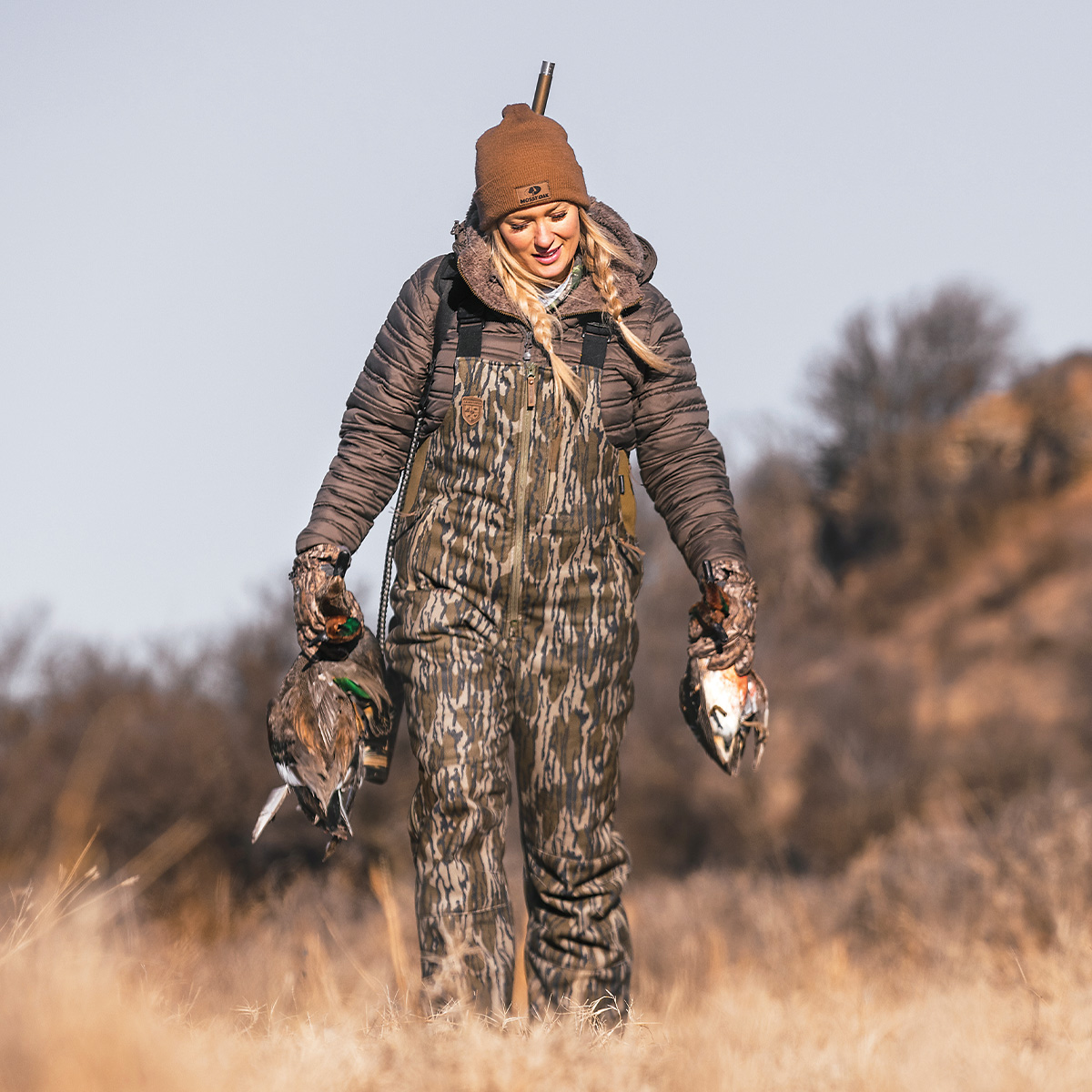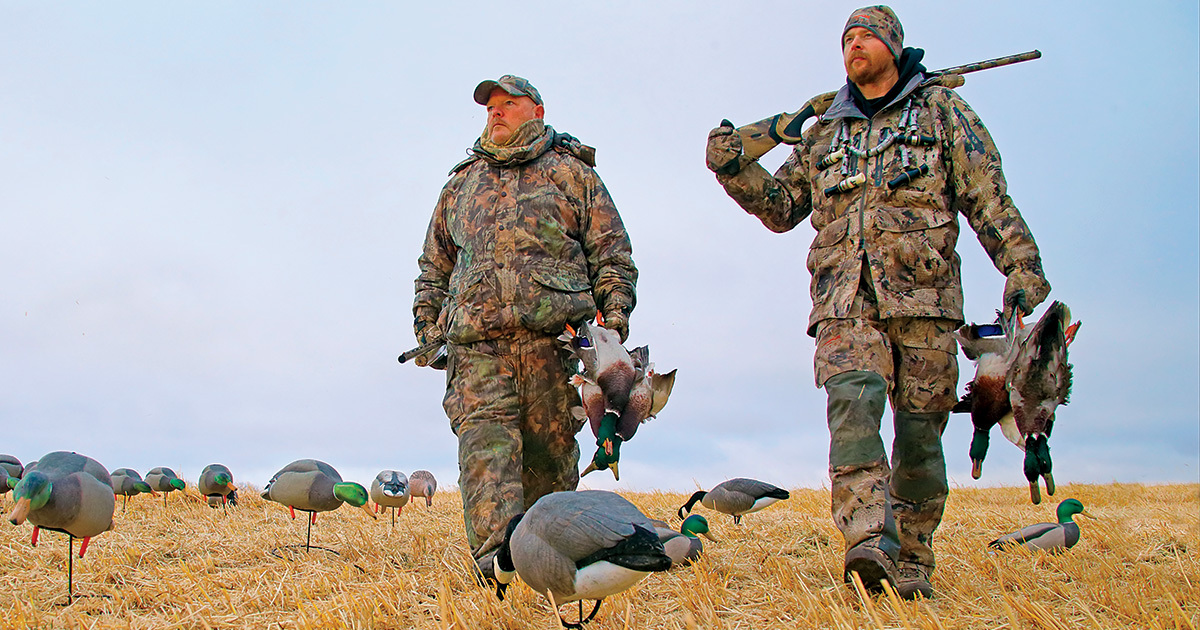Understanding Waterfowl: What's Your Limit?
A frank discussion about the influence of bag limits on hunting satisfaction
A frank discussion about the influence of bag limits on hunting satisfaction
By Mark P. Vrtiska, PhD

What makes the perfect bag limit depends on who you ask. Hunters have widely varying opinions based on age, experience, and where they hunt.
One of the only blemishes on an otherwise perfect hunt was that I totally whiffed on a drake gadwall that had come in with a couple of mallards, which I identified as they decoyed, and still promptly missed two easy shots. The gadwall flew off, along with my opportunity to obtain a full daily limit of six ducks (five of which can be mallards in the Central Flyway) and the ever-important edge in bragging rights over my buddy, who drove the point home as we were picking up decoys. “You know, I can’t say that I was heartbroken that you missed that gadwall,” he quipped.
We had just experienced a duck hunt that many waterfowlers would have been delighted with, but the fact that I didn’t get my full limit gnawed at me on the drive home and left me with just a hint of disappointment. This feeling aligned with what many waterfowl managers have discovered, which is that for a certain percentage of waterfowlers, hunting satisfaction is strongly related to achieving a daily bag limit. Two different studies of duck hunters in the United States confirmed this connection. More recently, a similar study from New Zealand indicated the same correlation, even with that country’s incredibly generous bag limits of up to 50 ducks per day in some areas. Thus, it appears that when managers set a daily bag limit, it's considered to be a benchmark for success that certain hunters strive to attain. This might also inadvertently create an expectation for a level of success that many hunters cannot realistically achieve, at least on a regular basis.
What about the impact of bag limits on waterfowl populations? Implemented in 1995, Adaptive Harvest Management (AHM) prescribes annual season lengths and daily bag limits for ducks in each flyway based on annual breeding population estimates and spring wetland conditions in the Prairie Pothole Region and other key breeding areas. Waterfowl hunters have enjoyed liberal hunting regulations (with some added restrictions for certain species) every year since AHM was implemented—a remarkable 30-year run. Because there have been few changes in bag limits during this time, it is difficult to estimate how different regulation packages may or may not impact waterfowl populations.
Another poorly understood impact of daily bag limits is how they influence bird behavior. It stands to reason that species with higher bag limits will receive more hunting pressure than species with lower limits. Recent studies of mallards marked with GPS tracking devices indicate that the birds spend more time in sanctuaries in response to intense hunting pressure in surrounding areas. Thus, by increasing hunting pressure on certain species, liberal bag limits could make these birds more elusive and therefore more challenging to harvest.
All this begs the question, what is the perfect bag limit? Opinions certainly vary among waterfowlers according to their hunting experience, age, and where they hunt. In a national survey of US waterfowl hunters, approximately half (48 percent) indicated that they did not need to shoot a limit of ducks or geese to have a satisfying hunting experience. Additionally, 42 percent indicated that they had not shot a full limit on any hunt during the previous season (less than 1 percent reported taking a limit of ducks on all their hunts).

In a study of Central Flyway duck hunters and their daily harvest activity, only 13 percent of successful hunters reported that they had obtained a full six-duck limit during the previous season (compared to 28 percent during the three-bird-limit days of the late 1980s and early 1990s). Data from Missouri indicate that hunter satisfaction was only slightly higher among hunters who harvested five or six ducks than it was for those harvesting four ducks. Researchers found similar results for New Zealand duck hunters, even with the larger bag limits. Finally, larger bag limits appear to only preferentially benefit more avid duck hunters. Again, from a study of Central Flyway waterfowlers during liberal harvest regulations, the top 10 percent of duck hunters in terms of harvest (those harvesting more than 35 ducks per season) accounted for 38 percent of the total harvest. Hunters with the lowest harvest level (only one or two ducks a season) accounted for less than 1 percent of the total.
If you’re after a good discussion in the blind this fall, throw out the question or statement of what the daily bag limit should be for ducks. You will get a wide variety of answers depending on who you are sharing a blind with. This variation would likely be repeated up and down the flyways. Studies have clearly shown that different groups of waterfowl hunters want different waterfowl hunting experiences. While harvesting some ducks or geese is important in all these groups, the level of harvest varies in relation to an individual’s overall hunting experience.
Personally, I believe that I could live with a daily limit of four ducks. When I say that in front of other hunters, some nod in agreement while others look at me like I have two heads. (As mentioned at the beginning of this article, I gladly shoot a full limit of six ducks when the opportunity presents itself). I also wonder how the bag limit discussion would go in duck blinds versus goose pits. In some preliminary work we’ve done at the University of Nebraska–Lincoln, we found that satisfaction among goose hunters is not as directly tied to bag limits and harvest as it is among duck hunters.
You may have noticed that at the beginning of the article I said “blemishes” and not “blemish” about our late-season hunt. When we got back to my truck and put our birds on the tailgate for pictures, one of my buddy’s “hen mallards” turned out to be a drake gadwall! He’d deftly shot a double on the first two ducks that pitched into our decoys right after shooting time. In the dim light and chaos of retrieving and having more ducks decoy, he had assumed that he’d shot two hen mallards—one was, but the other was a drake gadwall. As it turns out, he missed out on his full mallard limit, but more importantly, his bragging rights!
Dr. Mark Vrtiska is a professor of practice at the School of Natural Resources at the University of Nebraska–Lincoln.
Ducks Unlimited uses cookies to enhance your browsing experience, optimize site functionality, analyze traffic, and deliver personalized advertising through third parties. By continuing to use this site, you agree to our use of cookies. View Privacy Policy